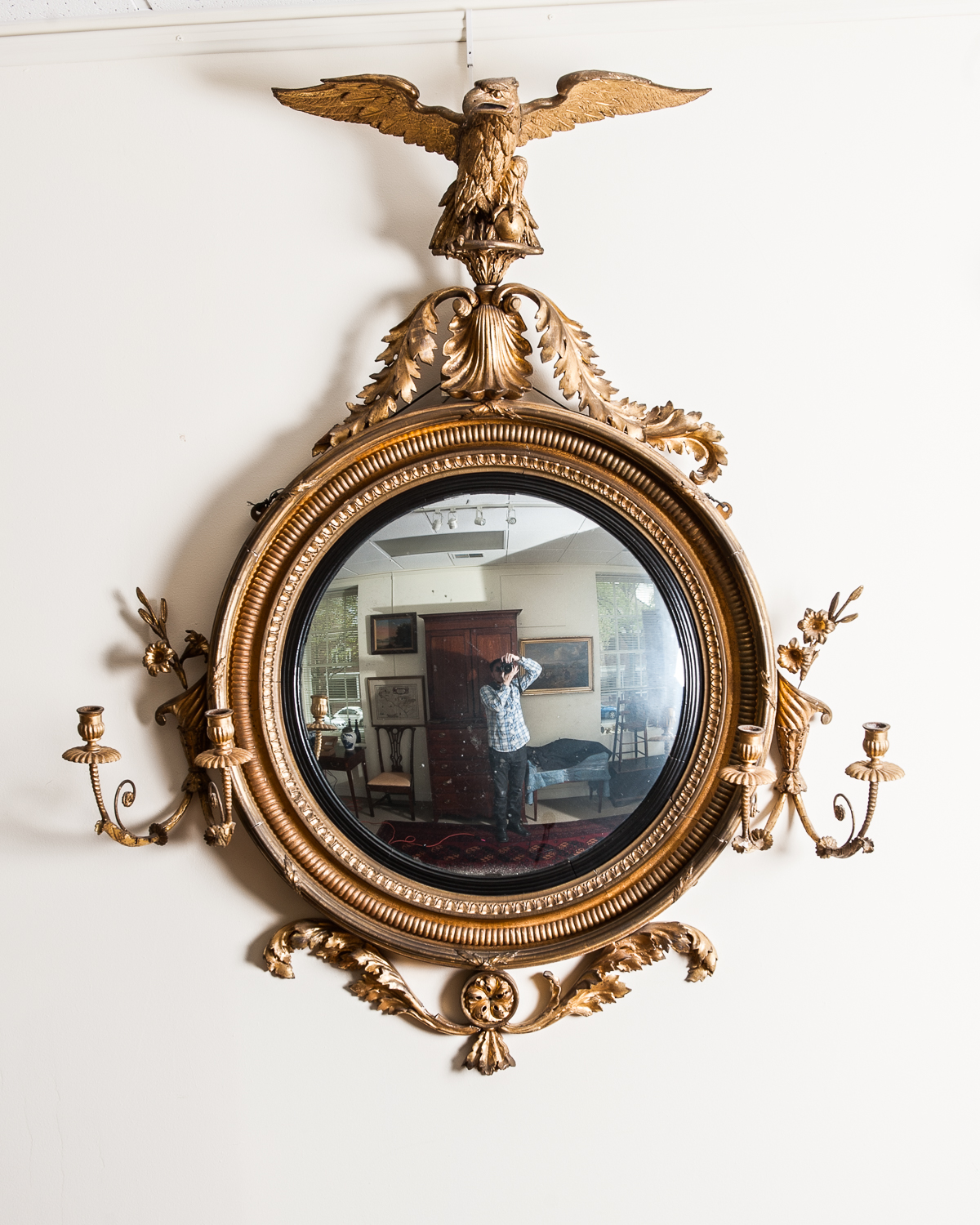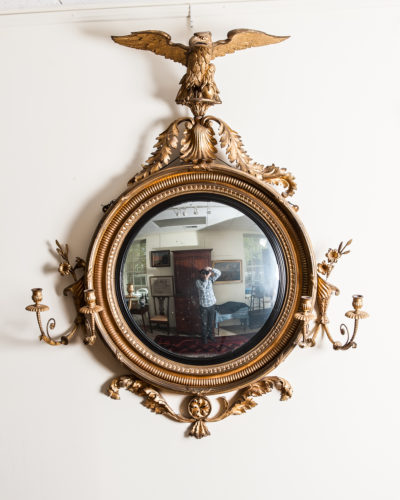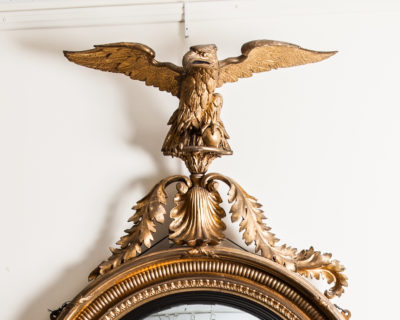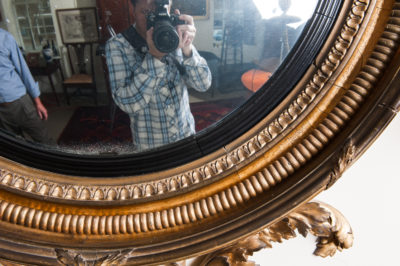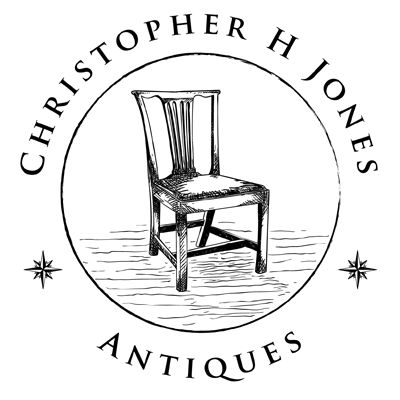Monumental Gilt Carved and Composition Convex Girandole Looking glass
England, circa 1815
Pine, gesso.
H: 58”; W: 48”
The English designer Thomas Sheraton wrote about girandole mirrors in his Cabinet Directory in 1803, saying:
“The properties of such mirrors consist in their collecting the reflected rays into a point, by which the perspective of the room in which they are suspended, presents itself on the surface of the mirror, and produces an agreeable effect. On this account, as well as for the convenience of holding lights, they are now become universally in fashion, and are considered both as a useful and ornamental piece of furniture.”
The popularity of these mirrors corresponds to the improvements in English technology and the ability of manufacturers to produce them cheaply and in quantity. By 1795, this was achieved at the Ravenhead works of the British Cast Plate Glass Manufacturers. The form remained popular throughout the Classical Period and has been revived several times since.
This example is among the most elaborate of the period glasses. The glass is surrounded by a triple molding: a reeded and ebonized slip, a carved egg and dart middle molding and an applied gadrooned circle set in a deep cove molding further embellished with applied foliage. Flanking the glass is a pair of double sconces held by carved cornucopias. The glass is surmounted by a spread winged eagle resting on a pedestal with one claw gripping a sphere. The pedestal is supported by trailing acanthus leaves. The grouping of formal foliage at the base balances the eagle above.
The girandole arms projecting from the body of the glass were designed to hold candles that were reflected in the mirrored surface. Girandoles, a term originally of Italian origin, became fashionable in mid- 18th century England and after and were symbols of luxury and opulence. These looking glasses were often hung above pier tables and the two formed a decorative unit originally sited between two windows.
The bold carving and molding profiles reflect the development of mirrors away from the delicate plume type mirrors of the Federal period into the more archeologically accurate classical motifs. Few, if any American gilders and picture frame makers were able to produce mirrors of this quality. Thus, virtually all of the surviving examples are English imports.
sold

